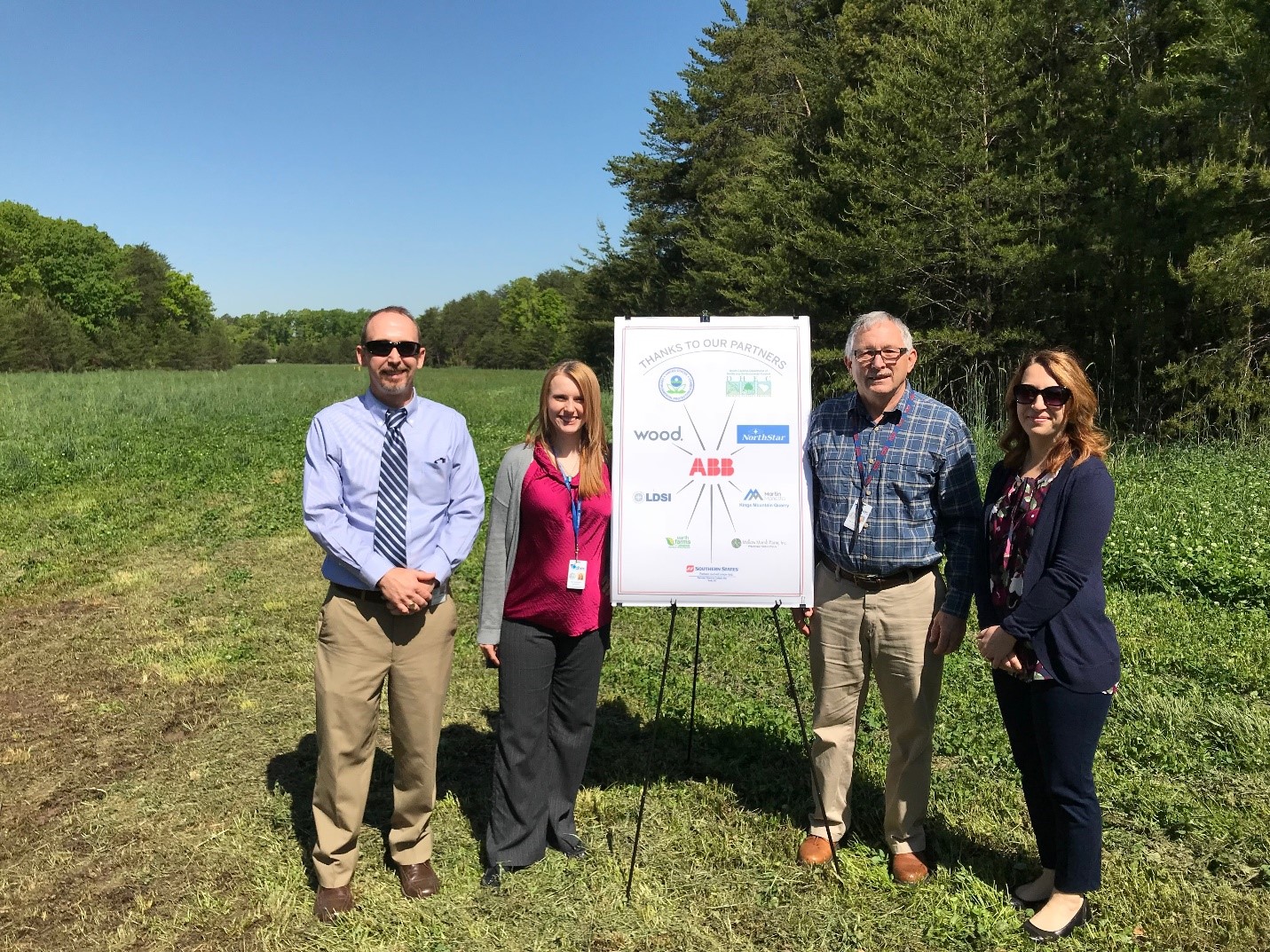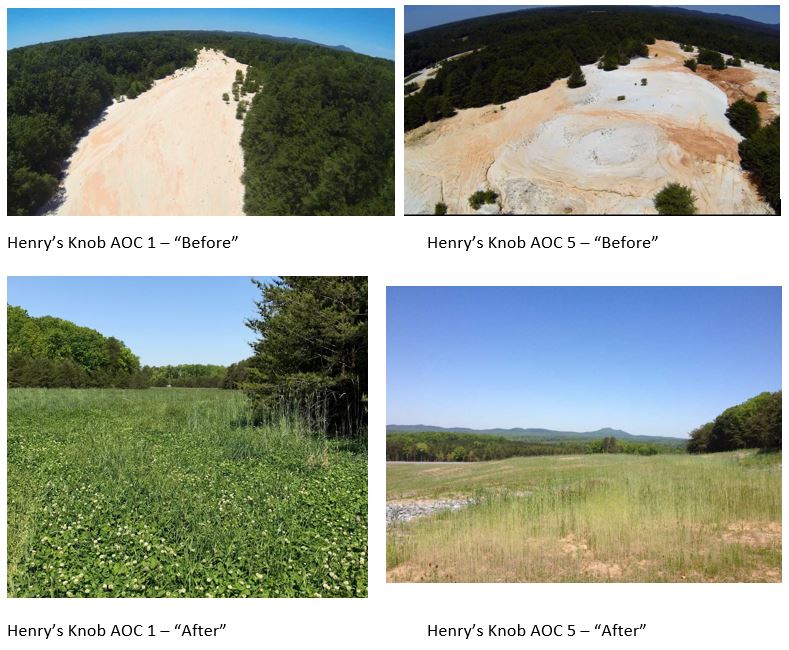DHEC, Partners Revitalize Site In Clover, SC
PHOTO: Left to right, Don Siron, BLWM Assistant Bureau Chief; Sara McDonald, Project support; Joel Padgett, Project Manager; Susan Fulmer, Federal Remediation Section Manager.
DHEC‘s Bureau of Land and Waste Management (BLWM) staff joined the United States Environmental Protection Agency (EPA) Region 4 to celebrate the successful ecological revitalization of the Henry’s Knob Superfund Site on May 1. The EPA awarded ABB, Inc. (ABB) their Excellence in Site Reuse Award for ABB’s efforts to restore the former mine site to a natural habitat. Region 4 established the “Excellence in Site Reuse” award to recognize those who have supported the Superfund Redevelopment Initiative through outstanding efforts when redeveloping a Superfund site.
Located in Clover, SC, the Henry’s Knob site was operated as an open pit kyanite mine from 1947 through 1965. Kyanite is a mineral used in refractory, ceramic and porcelain products. Mined ore-grade rock was ground up and floated to separate kyanite from other minerals. The waste rock and tailings were dewatered in ponds and piles and left onsite. Where iron sulfide minerals in the waste are exposed to water and oxygen, acid mine drainage occurs and can impact surface water and groundwater. These acidic conditions can mobilize metals. At the Henry’s Knob site, these conditions led to over 37 acres of unvegetated soils vulnerable to erosion, acidic water in the mine pit and surface drainages, and contamination of groundwater impacting nearby private water supply wells.
In the 1990s, ABB acquired the company that operated the mine and the environmental legacy associated with the property. Through an adaptive management approach, ABB and EPA worked with former BLWM project managers Chuck Williams and Kayse Jarman and current project managers Joel Padgett and Sara MacDonald to identify a cleanup approach to stabilize the impoundment dams, mitigate on-going erosion of the mine tailings through revegetation and stormwater control, and minimize impact to groundwater and nearby surface water. Beginning with a successful pilot study in 2013 and completed in December 2017, mine tailings in four areas of concern were successfully revegetated.
Traditionally, “dig and haul” has been used to remove tailings from mine sites. However, amending the soils in place leaves a lower carbon footprint and literally transformed these barren, low-pH soils into green fields. In other efforts to “green” the cleanup and provide economic benefit to the local community, ABB’s contractor locally sourced hay and organic compost to amend the soil, riprap to stabilize channels and dam faces, and native seeds to increase pollinator habitat.
This interim remedy approach has not only turned the site into an attractive ecological habitat and renewed the view for Henry’s Knob’s neighbors but also has served as an important first step in improving surface water and groundwater in the area. BLWM will continue to partner with EPA and ABB as the project moves into the next phase of cleanup.

